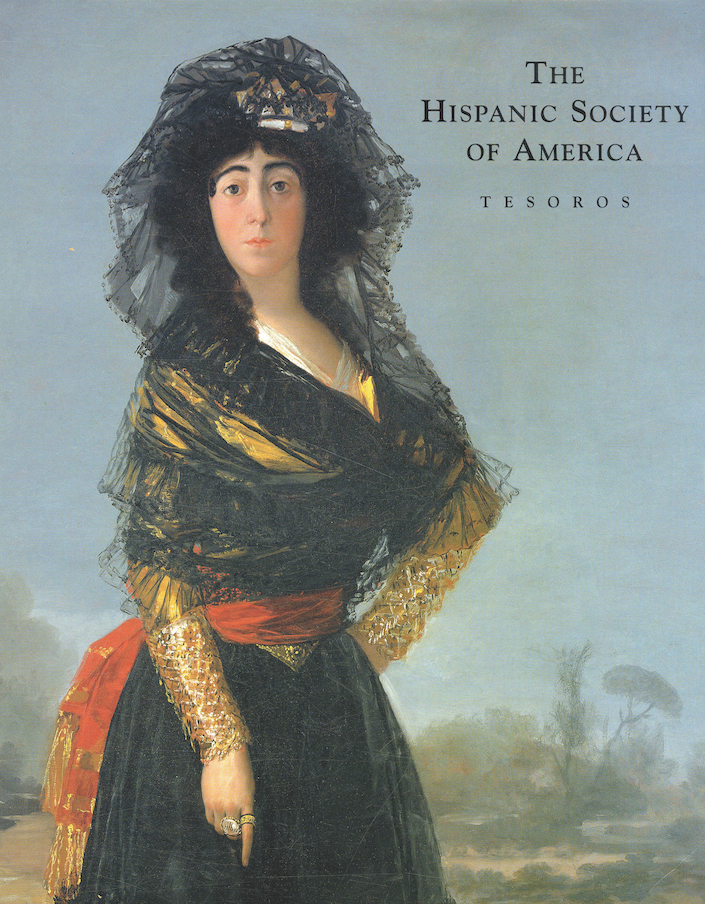The Huntington you may not know: Archer Huntington

Archer M. Huntington (1870-1955) had a young man’s dream — which he fulfilled after the death, in 1900, of his unimaginably wealthy father, Collis P. Huntington — to establish a microcosm of Spain in the United States. The Hispanic Society Museum & Library, in upper Manhattan, opened to the public in 1908, with the purpose of advancing study and appreciation of the arts, literature, and cultures of the Hispanic world.
This “poem of a museum,” as it has been called, is closed for renovations; in the meantime, a remarkable sampling of its holdings is traveling, first to Madrid’s Prado, and now to the Albuquerque Museum of Art, where I have been lucky to see it. “Visions of the Hispanic World: Treasures from the Hispanic Society Museum & Library” will be shown later this year in Cincinnati, and it will begin its final stop, before returning to New York, at the Museum of Fine Arts in Houston in March 2020.
Archer Huntington’s lifelong scholarly passion for the archeology, history, and art of Spain and her former colonies began at age 19 when he visited Mexico in 1889 with his parents, Arabella and Collis P. Huntington. From the 1890s to the 1920s, Archer formed one of the world’s greatest collections of Spanish art.
He did this intelligently, with erudition and care. Unlike other Gilded Age collectors, Archer Huntington, while not nearly as well known, exhibited a steady, thoughtful, and well-educated approach to collecting, remaining independent of the persuasive art dealers of his time. He was a modest man in both his collecting and philanthropy. His good works do not bear his name.
But who was Archer Huntington?
The Huntington family’s largesse is responsible for one of Los Angeles County’s, and California’s, most important cultural institutions, The Huntington Library, Art Collections, and Botanical Gardens, opened in 1919 in San Marino by Henry E. Huntington.
Collis Huntington
Henry Huntington’s uncle was Collis, one of the Big Four railroad barons of the mid-19th century, financiers of the Central Pacific and the Southern Pacific Railroads. Henry was a business associate of his uncle Collis, and Henry became a captain of industry too.
Collis and his family had moved from Sacramento to New York in the 1860s; it was back East where Collis met Arabella Duval Yarrington when she was 19, almost 30 years younger than the railroad man. After Collis’s wife died, Arabella became his second wife in 1884.
Archer Milton Worsham (later Huntington) was born to Arabella on March 10, 1870. “No conclusive evidence survives to verify the paternity of [the] child, and the truth may never be known without DNA testing,” writes Shelley Bennett, in “The Art of Wealth: The Huntingtons in the Gilded Age.” (This is an essential book to read to understand the complexities of the art world of its time.)
After Collis and Arabella were married, Collis adopted 14-year-old Archer, who became Archer Milton Huntington. Archer resembled Collis, and it is clear through documentation that they referred to each other as father and son.
Arabella’s influence
Arabella Huntington became an important collector in her own right; you can see some of her efforts in the art collections at the Huntington in San Marino.
Archer’s mother encouraged and financed some of Archer’s collecting. On view here in Albuquerque are works of Velazquez, Goya, Zubaran and El Greco; Iberian antiquities; pottery and glass; jewelry and textiles. One of the most arresting and intimate works in this exhibit is “Portrait of a Little Girl,” by Diego Velazquez, painted in 1638-1644. Arabella was keen on Archer’s acquisition of this painting; she made a $50,000 initial payment on his behalf. Its full price was $2.4 million in 2013 dollars.
Henry re-marries
Collis died in 1900. Henry divorced his wife, Mary Alice, in 1910. After Mary Alice died in 1912, Henry Huntington married the widow Arabella Huntington in 1913. Arabella did not like Southern California and remained mostly in New York. She died unexpectedly in 1924, Henry in 1927. They are buried in the mausoleum at The Huntington in San Marino. Archer and his wife had a long life of collecting and philanthropy. Archer died at his estate in Connecticut in 1955.
By Paula Panich
Category: Entertainment


